2016年 報告(2015年度プログラム)
2016年 海外短期フィールドワーク 児童発達学科 報告05-1
【2016年 海外短期フィールドワーク 児童発達学科 報告05-1】
■ Cabrillo College(アメリカ カリフォルニア州 サンタクルーズ) で、3/13〜3/28までの海外短期フィールドワークです。
■日付は、日本時間での表記です(現地は、1日前になります)。
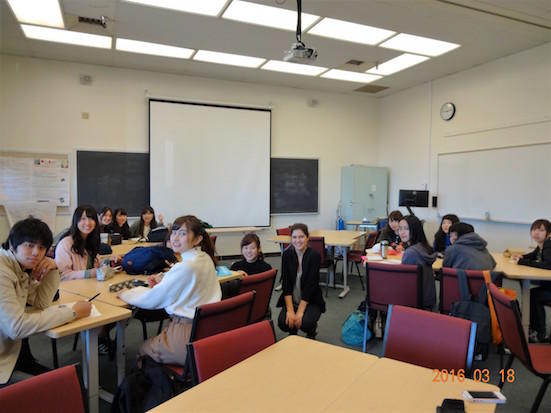
2016/03/18
今日はカブリヨ大学子どもセンターでの2回目の観察でした。観察する視点を、学生一人一人が焦点化して観察をしてもらい、その後それぞれの観察の振り返りについて、プリスクールのマスターティーチャーであるメリサンドにコメントしてもらいました。学生たちは子ども同士の交流に絞ってみたり、一人の子どもに絞って遊びの変化をみたり、スナックの時間の先生とのやり取りに焦点化するなどしていたことがわかりました。その後のフィードバックセッションでは、多くの学びがあったようでした。その中のひとつが、どのクラスでも制作活動をしているシーンがなかったのはなぜか、という疑問に対するメリサンドからの回答があげられます。何か既成にあるものを作るということは、ここではしていないのだそうです。ここの学校では、子どもたちの何かを作りたいというやる気やその過程を大事にしているため、何を作るかは問題ではなく、よって「形のあるものをつくる制作」は奨励されていないということでした。今回の部分実習では制作をする組が多いと思いますが、子どもの自由な発想を妨げることのない制作活動ができるでしょうか。
Today we had the second observation at the Children’s Center. This time the students were asked to focus on specific issues so that they could get a deeper understanding of what they are trying to do. After the guided observation, we got together to discuss what they had observed and get comments on them from Melisande who is a master teacher at the preschool class. The students have learned a lot in this feedback session. Among them, one comment from Melisande seemed to inspire them to rethink children’s activity. That is, one of the students asked Melisande why children here didn’t have an opportunity to make some objects led by teachers. She answered that here in Cabrillo Children’s Center they consider the process is more important than the end products. They don’t want children to make the same thing which is supposed to be an adult or teacher’s goal, not a child’s goal.
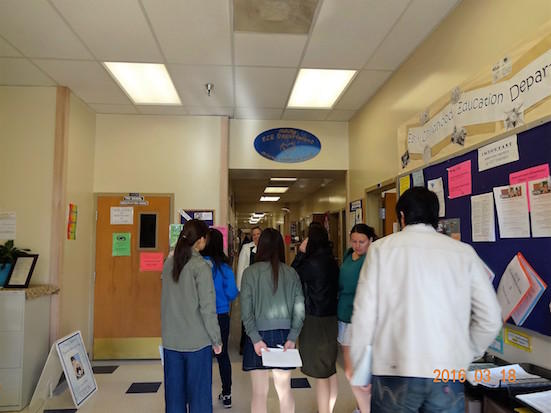
2016/03/18
いよいよ観察の開始です。まずはどのクラスから始めるかですね。この写真の左のドアーが、プリスクール(3歳〜5歳児)の観察室への入り口です。
Let’s get started! The left door in this photo leads to the observation room for the preschool room (3 to 5 year olds).
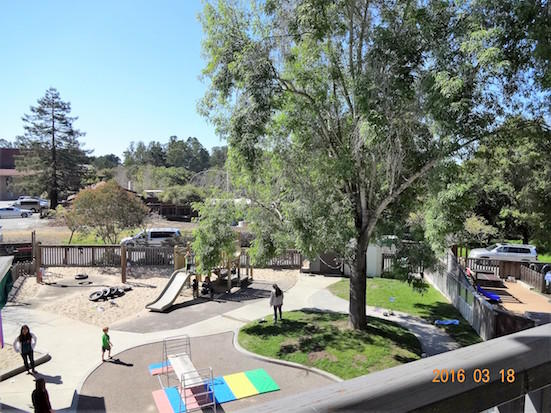
2016/03/18
かろうじて、2階からなら写真撮影を許されました。下に見えるのがプリスクールの園庭(プレイグランド)ですが、右の方に垣根をへだてて、幼児(トドラー、2歳〜3歳)クラスの園庭が見えます。ふじみ野幼稚園で異年齢の子どもが自由に行き来できる様子を見て、メリサンドは個人的には年齢が違う子どもの交流ができるのはいいと感じたと言っていました。
The playground is divided into three parts, for infants, toddlers, and preschoolers because state licensing regulations require developmentally appropriate physical environment for each age group of children. Melisande, however, told us that she personally liked that children of different ages can play together as she experienced in Fujimino kindergarten affiliated to Bunkyo Gakuin University.
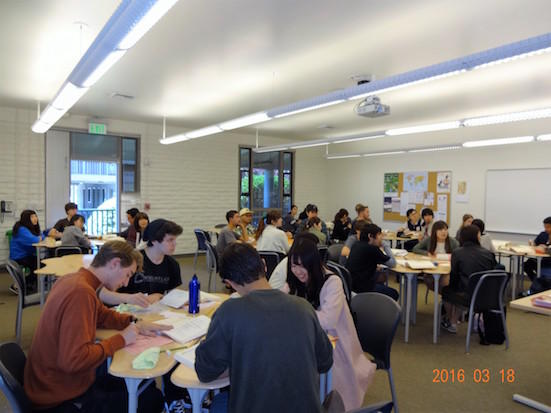
2016/03/18
午後からは、日本語クラスの参観で始まりました。写真のように、学生たちは各テーブルに別れて座り、カブリヨの学生に日本語のひらがな・カタカタ交じり文の読み方の指導をしました。日本語ネィティブスピーカーとして間違わずに教えられたでしょうか。
In the afternoon, students went to Japanese I, beginning Japanese. In the photo, one or two Bunkyo students sat at each table to help Cabrillo students read a short essay written in Hiragana and Katakana. Bunkyo students were expected to teach Japanese properly. I hope they did!
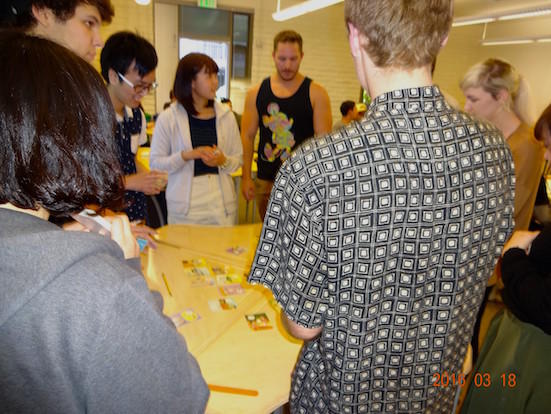
2016/03/18
こちらのグループでは「いろはがるた」をしていました。読み札をはっきり読む練習は英語にもいいですね。カブリヨの学生たちは、ひらがなはよくできていましたね。
In this group, they were playing cards called Karuta in Japanese. Bunkyo students had to read cards clearly, the way which would be very good for speaking English as well. Cabrillo students did a good job.
